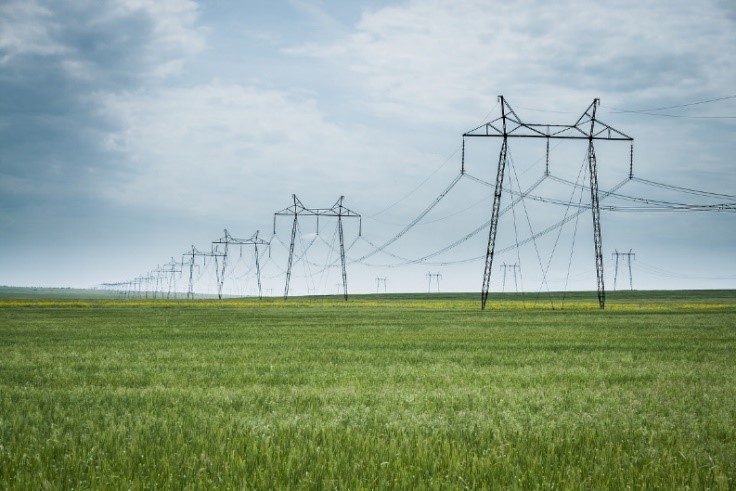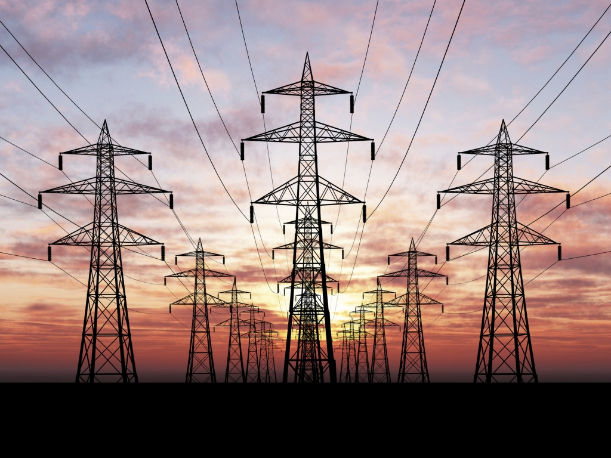DIGSILENT POWERFACTORY - UNIFIED PLATFORM FOR CALCULATION AND ANALYSIS OF ELECTRICITY SYSTEMS
PowerFactory Applications
PowerFactory is a leading power system analysis software application for use in analysing generation, transmission, distribution and industrial systems. It covers the full range of functionality from standard features to highly sophisticated and advanced applications including windpower, distributed generation, real-time simulation and performance monitoring for system testing and supervision. PowerFactory is easy to use, fully Windows compatible and combines reliable and flexible system modelling capabilities with state-of-the-art algorithms and a unique database concept. Also, with its flexibility for scripting and interfacing, PowerFactory is perfectly suited to highly automated and integrated solutions in your business applications.
Power Transmission

The transmission grid is currently undergoing a major change to reliably accommodate increasing amounts of non-dispatchable resources while maintaining operational efficiency and system-wide cost. The displacement of conventional generation by wind and solar power generators imposes new challenges on the ability of the grid to maintain system stability.
PowerFactory offers a complete suite of functions for studying large interconnected power systems and addressing these emerging needs. Its fast and robust simulation algorithms can be applied to any AC or DC network topology and support the simulation of new technologies such as converter-based power generation, FACTS, voltage-sourced converters (VSC), HVDC, cables and overhead lines, DC breakers, filters, and various types of MW- and Mvar-controllers and virtual power plants. To maintain such a rich data model, PowerFactory comes with comprehensive planning tools. Operation Scenarios can be used to save operating points, thus enabling the user to study different scenarios with just a few clicks. Network Variations with time-related Expansion Stages allow the user to model network development projects including the (de-)commissioning of power system equipment. Just by changing the study time, the right network configuration will be automatically used for calculations.
PowerFactory is also perfectly suited to transmission system operation planning. It integrates a comprehensive set of tools to support automatic and parallel grid security analysis such as ENTSO-E D2CF/DACF/IDCF, and outage planning. Multiple interfaces (API, DGS, CIM) and flexible scripting languages (DPL, Python) enable smooth -integration with existing systems, and compliance with ENTSO-E CGMES data exchange standard.
RELATED FEATURES AND FUNCTIONS
- Outstanding power system modelling capabilities
- Study time based model on demand options
- Support of multiple network diagrams with direct connections to the network elements
- Support of node-breaker and bus-branch models
- Seamless integration of network model, analysis and reporting
- Contingency Analysis
- Stability Analysis (RMS and Modal Analysis)
- Electromagnetic Transients (EMT)
- Sensitivities / Distribution Factors
- Outage Planning
- Harmonics / Power Quality
- Unit Commitment and Dispatch Optimisation
- PV/QV curve calculations
Power Distribution

New challenges such as reverse power flow and voltage rise due to distributed generation, as well as the integration of E-mobility, have led to an increased complexity in the planning and operation of distribution networks. Handling the associated analysis calls for sophisticated and comprehensive network optimisation tools.
To handle these challenges, PowerFactory offers a wide range of powerful tools and functions. Using built-in interfaces, the creation of the network and the input of measurement values can be achieved using GIS and SCADA data. Based on this data, the current state of the network can be analysed, for example to evaluate the hosting capacity for load and generation. For ¬further optimisation of the network, there are numerous functions available, such as tie open point optimisation, voltage profile optimisation and phase balance optimisation. A user-friendly time sweep simulation function facilitates analysis of the impact on the network infrastructure of both conventional equipment and renewables, taking into account volatile distributed generation and storage systems with user-defined controls.
RELATED FEATURES
Models
- Load models using standard load profiles or available smart meter data
- Models for PV systems based on solar radiation, electric vehicles, battery storage, etc.
- Innovative equipment (distribution transformer with OLTC, voltage regulators, reactive power control schemes, etc.)
User Interface
- Geographic diagrams with publicly available and custom map services as background
Analysis and Optimisation
- Probabilistic Analysis with stochastic modelling of ¬distributed generation and load consumption
- Optimal remote switch placement and capacitor placement
- Voltage Profile Optimisation for bi-directional power flows
- Reliability Analysis including optimal power restoration
- Power Quality and Harmonic Analysis
- Protection functions
- Techno-Economical analysis
- Connection Request Assessment
- Quasi-Dynamic Simulation
- Cable sizing and derating factor calculations
Power Generation

Reliability, efficiency and stable operation are essential features for the generation which forms the core of any power system. PowerFactory offers tools suitable for the design and operation of a power plant, providing a broad spectrum of solutions, ranging from the analysis of the electrical and me-chanical behaviour in steady-state and transient conditions, to the optimisation of generator dispatch.
Modern power systems bring new challenges to conventional power plants. Besides sub-synchronous resonances (SSR) typically related to series compensation, sub- and super-synchronous torsional interactions (SSTI) with converter-based equipment are an increasing challenge. Proper analysis of such phenomena can mitigate the risk of damage to equipment and associated high costs.
Highlighted PowerFactory Capabilities and Typical Studies
- Models of generators, governors (steam, gas, diesel, hydro), automatic voltage regulators (AVRs) and power system stabilisers (PSSs)
- Voltage dependent PQ capability curves
- Models of motors, protection relays, power electronic converters and DC equipment
- Calculation of short-circuit currents
- in AC grids according to IEC 60909 and ANSI
- in DC auxiliary supply grids according to IEC 61660 and ANSI/IEEE 946
- Unit Commitment and Dispatch Optimisation, including grid and security constraints
- Stability and EMT simulation
- Behaviour during short-circuits and load changes
- Frequency control
- Transient stability
- Transformer inrush
- Sub-synchronous resonances (SSR)
- Sub- and super-synchronous torsional interactions (SSTI)
- Model frequency response analysis (Bode and Nyquist Diagrams)
- System parameter identification for dynamic models
Industrial Systems

The design and operation of industrial networks is becoming increasingly challenging with the integration of more power electronics, sophisticated automation systems, and increased reliance on island mode operation. To face these challenges whilst ensuring continuity of production, electrical power quality, and the safety of personnel, proper modelling and analysis of the electrical networks is of the utmost importance.
PowerFactory provides a vast array of functionality perfectly suited to the industrial user’s needs such as high precision load flow algorithms, flexible short-circuit calculation features, 4-wire and DC grid model¬ling, protection modelling and analysis tools, harmonic calculations and filter design options. In addition, PowerFactory provides up to date stand¬ards for short-circuit and arc-flash calculations, with clearly presented results and a comprehensive and user-friendly interface. The flexible data manager allows easy, tabular config¬uration of all input parameters and a spreadsheet-like export of results. To meet new challenges in industrial networks which require more detailed analysis in the time domain, PowerFactory offers the flexibility to analyse electro-mechanical and also electro-magnetic phenomena.
TYPICAL STUDIES
As an integrated simulation tool with a rich spectrum of analysis functions, a variety of analyses may be carried out using the same data model.
- System analysis under different network configurations in relation to network topology, generation and load status
- Short-circuit calculations for AC and DC systems according to IEC/VDE, ANSI and IEEE standards
- HV & LV cable sizing according to IEC; NF and BS standards; ampacity, voltage drop, short-circuit capability
- Motor starting, re-acceleration and voltage drop analysis
- Protection scheme coordination (overcurrent, differential, distance and signalling)
- Harmonic distortion studies, resonance studies and filter sizing
- Network reliability analysis, scenarios and fault models
- Time domain simulation for stability and electro magnetic transient analysis
- Arc flash analysis according to IEEE, NFPA and DGUV standards
Distributed Generation

Power system phenomena such as reverse power flows, voltage dips and swells, varying fault levels and equipment loading are some of the major challenges associated with distributed generation in electricity systems.
Of particular note are the challenges arising from the interaction between highly volatile generation from renewable sources, a network containing an increasing amount of innovative equipment and an increasing variability in consumption. The comprehensive model library in PowerFactory provides users with the ability to use ready-made models for generators and converters, PV systems with integrated power calculation based on solar radiation, fuel cells, wind generators and battery storage, etc. as well as dynamic models (e.g. IEC, WECC DER_A).
To account for the interaction between consumption and generation in the network, models for single and three-phase loads, consumption energy profiles and electric vehicles can be used.
This provides the perfect basis for all the necessary analysis, from unbalanced network assessments and voltage drop/rise calculations, to quasi-dynamic simulations and voltage profile optimisation. Using the hosting-capacity calculation, the remaining capacity for renewable energies can be evaluated, while probabilistic analysis and reliability analysis can be performed in order to determine the risks of uncertainty.
SELECTED FEATURES
Modelling
- PV system model with integrated power calculation based on solar radiation (1 and 3-phase technology)
- Dynamic models of wind turbine generators, PV systems, battery storage and other renewable generation units including FRT-capability
- Various reactive power control schemes for single generators or wind farm / PV park master controllers
- On-load-tap-changer capability with various control schemes including line-drop-compensation for transformers and voltage regulators
- Symmetrical and unsymmetrical network representation
Calculation
- Cable sizing of distribution networks, derating factor and cable ampacity calculation
- Medium to long term quasi-dynamic simulation accounting for variable generation and battery storage applications
- Optimisation of distribution transformer tap positions for bi-directional power flows in systems with a high level of distributed generation, for optimised voltage profile
- Short-circuit calculation according to IEC 60909
- Hosting-Capacity tool for the evaluation of spare generation or load capacity in predefined network areas
- Probabilistic Analysis of load flow and optimal power flow
- Reliability Analysis to identify the loss of generation and loads including optimal restoration schemes
- Harmonic analysis, impedance sweep and flicker calculation for power quality assessment
Renewables

Complex studies for the integration of renewable generation into electrical networks are an integral part of network planning and analysis. PowerFactory combines extensive modelling capabilities with advanced solution algorithms.
Network and park models are easily created using an intuitive drawing toolbox, while the use of model templates and an extensive model library allow complete plant models to be constructed efficiently.
A full set of tools is provided to undertake the wide range of studies required for grid connection and grid impact analysis of wind parks, PV generation and all other renewable energy power plants. Recurring tasks can easily be automated using scripting tools, to streamline the analysis process.
SELECTED KEY FEATURES
- Steady-state load flow calculations taking into account voltage-dependent reactive power capability limits, ¬power park controllers with set-point characteristics, etc.
- PV system model with integrated power calculation based on solar radiation (1 and 3-phase technology)
- Short-circuit calculation according to IEC 60909 and ANSI, and complete method with dynamic voltage support according to k-factor settings
- Medium to long-term Quasi-Dynamic Simulation
- Stochastic wind models and probabilistic analysis tools
- Balanced and unbalanced stability and EMT simulation, e.g.for UVRT and OVRT analysis
- Multiple domain co-simulation (RMS/EMT)
- Models for all established wind turbine and generator/ converter types, photovoltaic systems, battery energy storage, STATCOMs and HVDC systems
- Dynamic models according to IEC 61400-27-1 and WECC
- Interface for external models according to IEC61400-27-1
- User-defined modelling for quasi-dynamic, dynamic RMS and EMT simulation
- Encryption option for user-defined models and ¬compilation option (DLL model interface)
- Power quality assessment including harmonic ¬analysis with frequency-dependent Norton equivalents, ¬impedance frequency sweeps and flicker calculation
- Model Frequency Response Analysis (Bode and Nyquist Diagrams)





